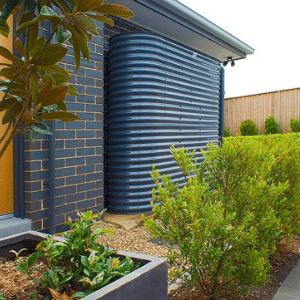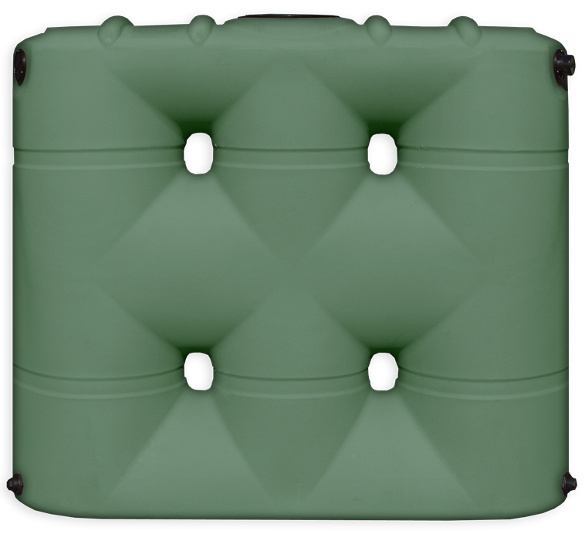Leading Factors to Buy Slimline Water Tanks for Your Home
Understanding the Significance of Rainwater Containers in Drought-Prone Regions for Water Security
In regions susceptible to long term dry spells, the duty of rainwater storage tanks in reinforcing water safety and security is a topic of growing importance. As areas grapple with the difficulties of water deficiency, recognizing the relevance of these storage tanks exceeds plain collection of rain. Rainwater storage tanks work as an essential device in alleviating the influence of water shortages by offering a lasting resource of water for various needs. The real worth of rain tanks expands much past plain storage space; it incorporates resilience-building measures and the promotion of lasting water conservation approaches. This complex strategy to water safety and security warrants a closer evaluation of the duty rain storage tanks play in ensuring a reputable water during times of drought.
Benefits of Rainwater Tanks
Utilizing rain containers provides a lasting option for augmenting supply of water and improving water security in household and commercial settings. One of the key benefits of rain storage tanks is their capability to lower reliance on keys water supply. By catching and keeping rainwater that falls on rooftops, this alternate resource can be used for various non-potable objectives such as watering, flushing bathrooms, and washing clothes. This not just preserves cured drinking water but also reduces water bills for customers.

Rain Harvesting Methods
Rainwater gathering strategies encompass a variety of methods developed to successfully collect and keep rain for numerous purposes, adding to water conservation and sustainability. One usual technique is the installment of rooftop catchment systems, where rain is collected from the roof of a building and routed to a storage container. This approach is fairly easy and cost-efficient. One more preferred method is the usage of above-ground or underground storage space tanks to save rain for later use. These storage tanks can be found in different dimensions and products to suit various needs and can be linked to the existing pipes system for simple gain access to.

Furthermore, rainfall gardens and permeable sidewalks are ingenious methods that involve landscaping or paving surfaces in a way that enables rainwater to percolate into the ground, replenishing groundwater books. In addition, shape farming and terracing are farming techniques that help catch rain and prevent dirt disintegration in sloping check out here surface. By implementing these diverse rain harvesting strategies, areas can boost water security and resilience in drought-prone regions while promoting sustainable water management techniques.
Significance of Water Safety
Making sure trusted accessibility to tidy and adequate water sources is extremely important for sustaining human wellness, financial growth, and ecological health. Water protection is a crucial aspect of societal resilience, particularly in regions susceptible to droughts and water deficiency. Ample water protection incorporates numerous measurements, including accessibility, quality, and ease of access of water for domestic, farming, commercial, and ecological requirements.
Water safety and security plays an essential role in advertising public wellness by minimizing the occurrence of waterborne diseases and ensuring hygiene centers. Economically, water security is crucial for farming efficiency, industrial procedures, and total economic development. Slimline water tanks. Water safety is closely connected to ecological sustainability, as it supports ecological communities, biodiversity, and general ecological equilibrium.
In drought-prone regions, water protection ends up being a lot more crucial because of the enhanced risk of water scarcities. Carrying out techniques like rain harvesting, water recycling, and effective water administration methods can significantly improve water security in these locations. By focusing on water safety and security, areas can better stand up to the influences of climate modification, populace growth, and other obstacles that threaten Bonuses water accessibility.
Enhancing Water Strength
With increasing global water difficulties, constructing resilience in water systems has actually come to be an essential focus for lasting growth efforts. Enhancing water resilience includes carrying out approaches to ensure water accessibility and high quality despite transforming ecological problems, such as droughts, floods, and pollution.
One secret element of improving water strength is advertising making use of rain containers in drought-prone areas - Slimline water tanks. Rain tanks function as an effective means of capturing and saving rain for later usage, lowering dependence on limited freshwater resources throughout completely dry periods. By integrating rainwater harvesting systems into water administration plans, communities can enhance their ability to withstand water scarcity and maintain water protection

Lasting Water Preservation
Amidst escalating water difficulties, the sensible monitoring of water resources through sustainable preservation techniques is essential for guaranteeing long-lasting ecological security and social well-being. Sustainable water conservation involves the effective usage of water sources to fulfill existing needs without compromising the ability of future generations to satisfy their own demands. By carrying out approaches such as rain harvesting, greywater recycling, and water-efficient modern technologies, areas can reduce water wastage and reduce pressure on freshwater sources.
Additionally, sustainable click to find out more water conservation practices add to ecosystem health by keeping ample water degrees in rivers, lakes, and marshes, sustaining biodiversity, and protecting natural habitats. These techniques additionally play a critical duty in alleviating the effects of climate change by aiding to adjust to altering precipitation patterns and water availability.

Verdict
Finally, rain tanks play a vital duty in enhancing water safety and strength in drought-prone areas. By using rain harvesting techniques, neighborhoods can lower their dependence on conventional water resources and advertise lasting water preservation practices. This not only assists alleviate the influences of water deficiency throughout droughts but also contributes to long-lasting water safety and strength despite environment change challenges.